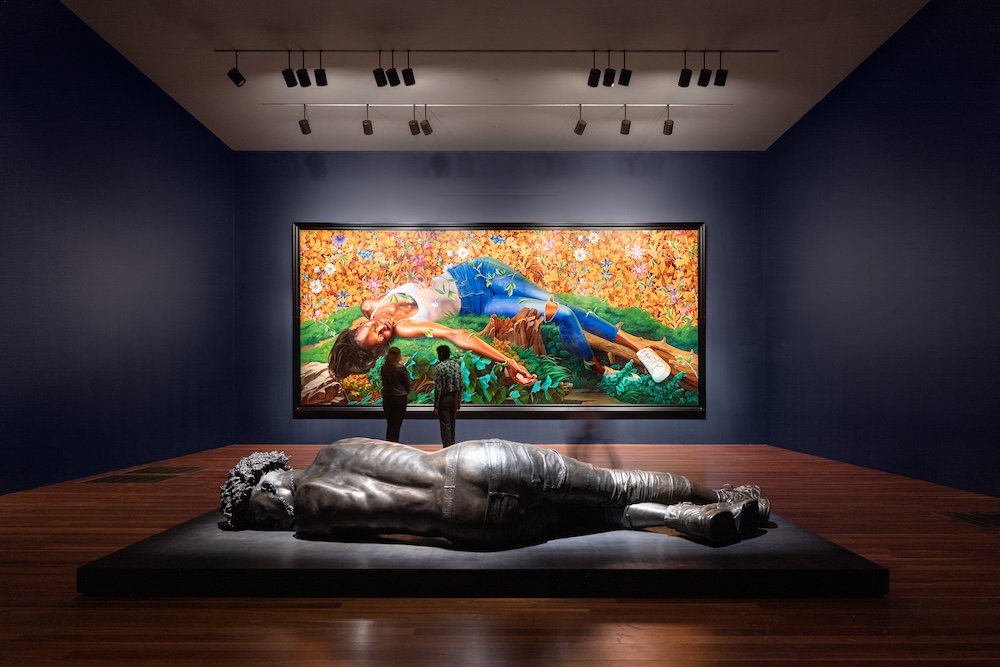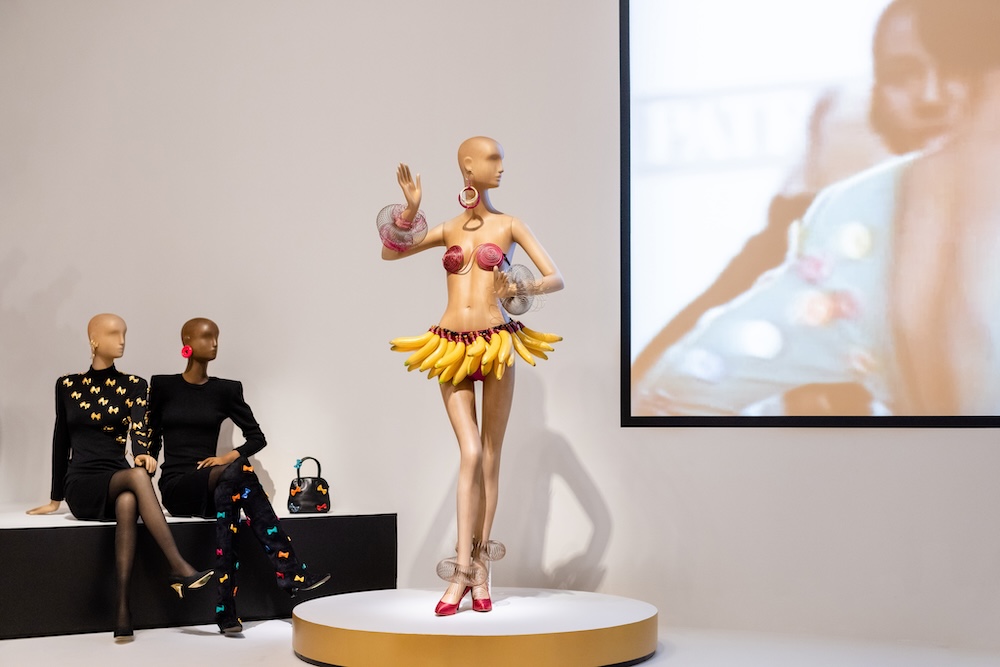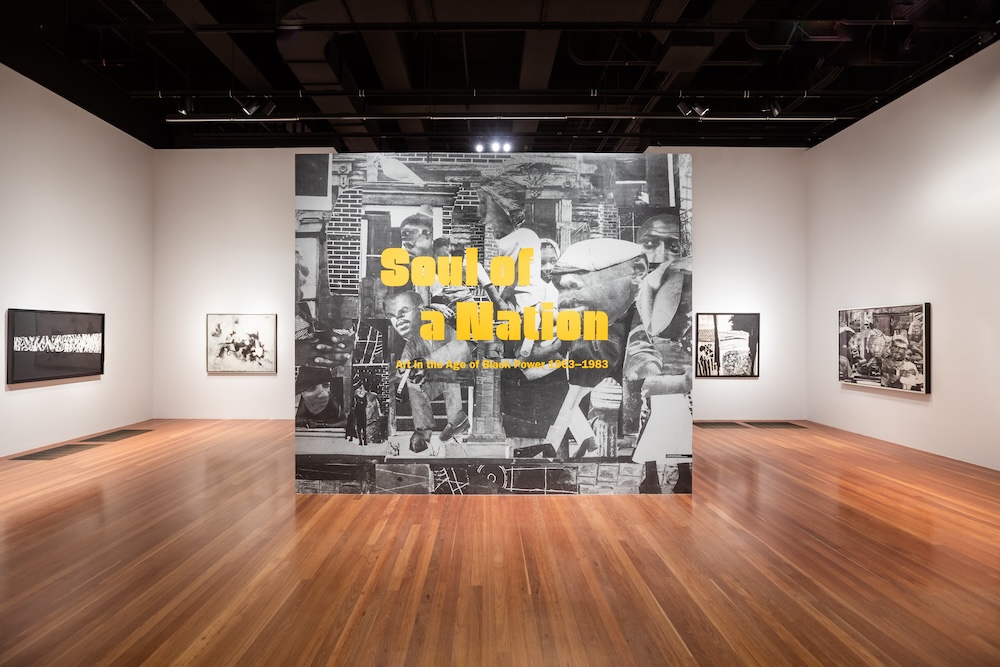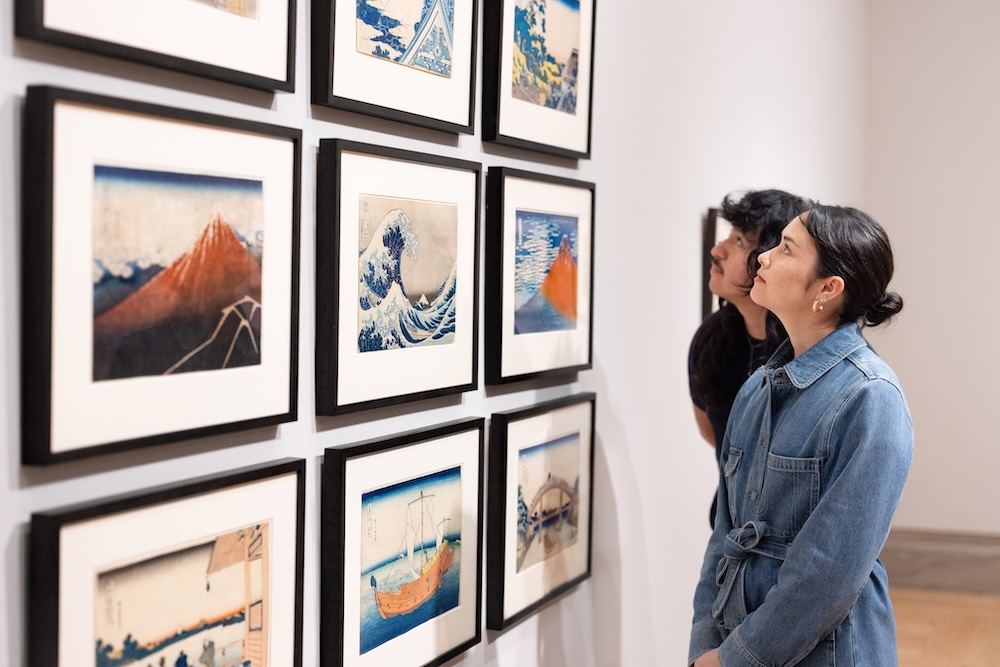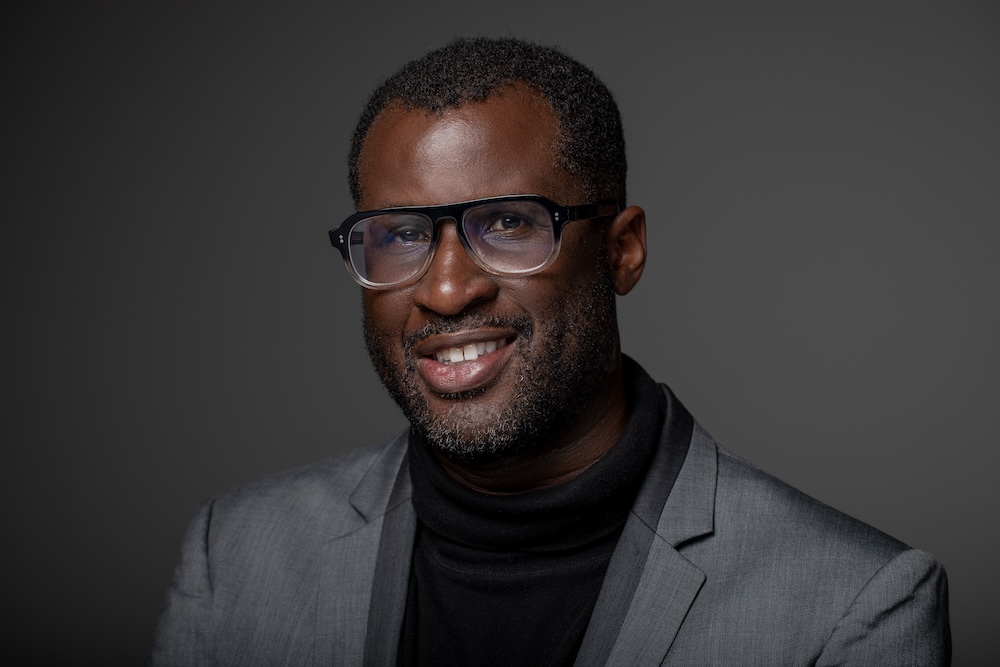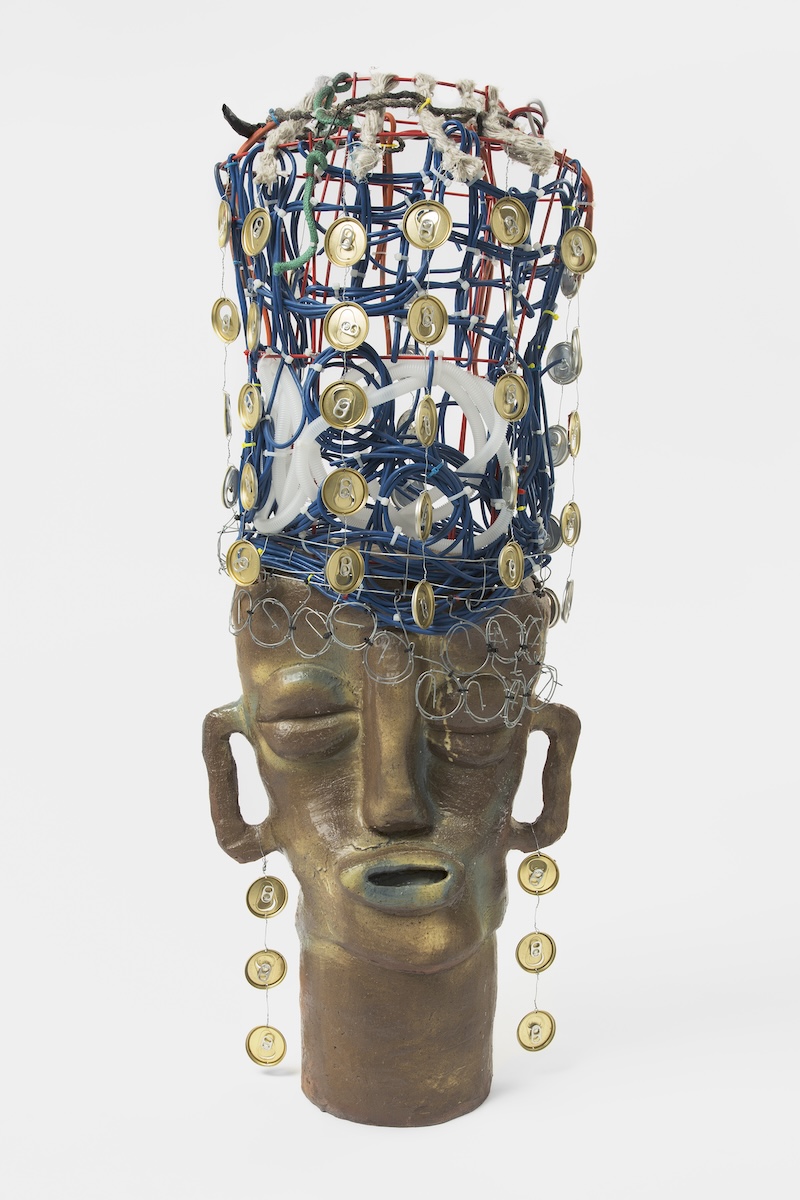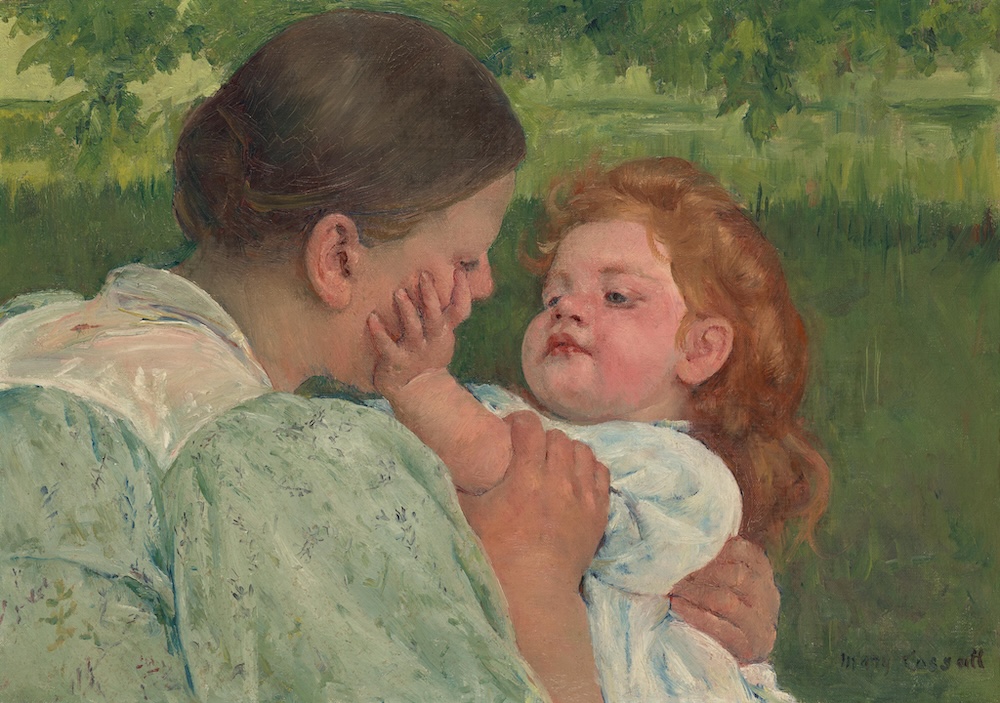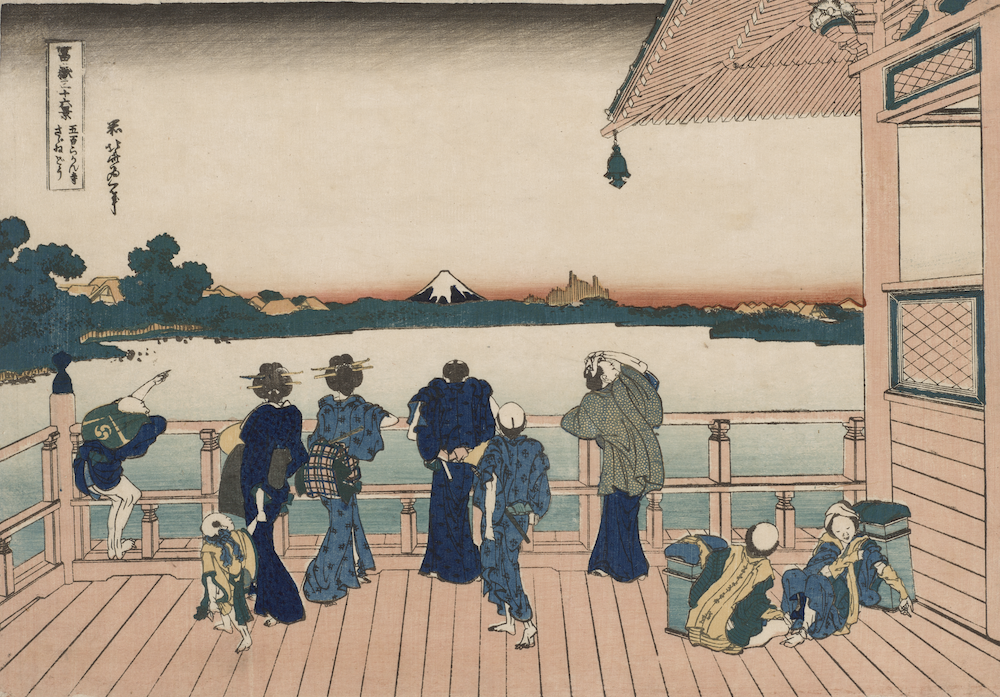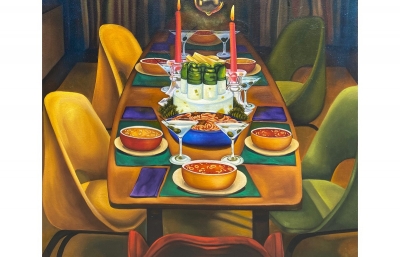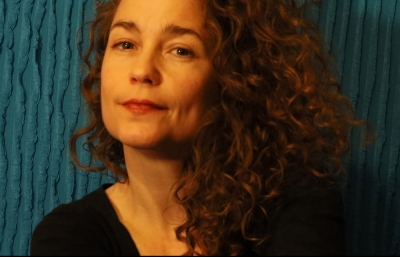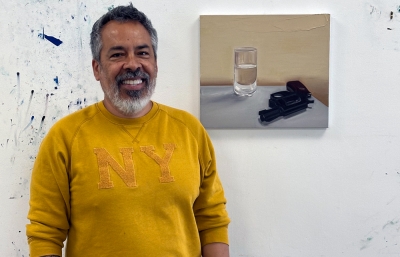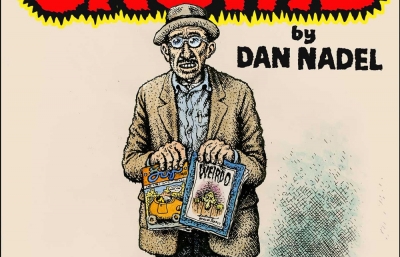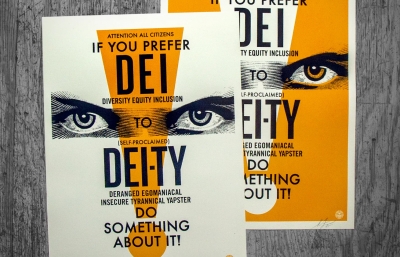Accommodation, Attribution, Appreciation, Appropriation… am I complicit or complacent? If truth is beauty, and beauty is truth, then is a rose just a rose, or is it possibly more? A house is full of items that stay and those that change, but it is still resonant because we know something about the inhabitants. A museum is like a public house, albeit an imposing one, and we often visit, fascinated by the objects but not knowing much about why they were chosen and how they got there. Though an invisible host, Abram Jackson has a big hand in widening accessibility and engagement with the wonders within. As Director of Interpretation at the Fine Arts Museums of San Francisco, he’s among the art professionals who translate, tell stories, and bring each other closer.
Gwynned Vitello: In the past, if I’d been asked to draft an organization chart for a museum, curator, conservator, docent, and even security guard would have immediately come to mind. Now that I’ve done some research, I can add Director of Interpretation, but please expand, since I have a lot more to learn.
Abram Jackson: That’s a great starting point for our conversation. I’ll say that interpretation is burgeoning in many ways. It’s been situated in a variety of capacities for about 20 years, and what I’d say about my role here is that it might be distinctive in many ways. The role is really to support the museums in telling the most inclusive stories about our permanent collection and our special exhibitions to a broadening audience. It’s the audience that we are working toward that defines us as museums for all.
My background is in education, specifically ethnic studies, and my intent for this role was really to support ethnic studies theories, using my experience with DEIA (Diversity, Equality, Inclusion, and Accessibility) initiatives to tell that story. At the core of my work is using that framework to support the museums in doing so. Interpretation varies, so sometimes the emphasis is on making exhibitions accessible, whether that’s language or related to people with disabilities. In some cases, it’s about infusing an interactive element, but at its core, it’s about providing an equity lens to support the exhibitions.
The first person I’d heard of in the field was Betty Reid Soskin, the National Park Ranger. So, was this kind of role first used in parks and scientific or technical institutions?
Wow, she’s a hero of mine, and I guess for all of us, right? Well, I do know that natural science museums have had them longer than art museums. I would say that it’s new in the art field, but other museums have definitely used interpretation as a support. And you think about, with natural science, those folks are really thinking about how to really deliver this content, to make it exciting, dynamic, and accessible for visitors. Think about science museums and all the things people can play with and touch with the intent of understanding complicated concepts, and that makes sense. And I think we’re learning that it makes sense for the arts. We’re not necessarily going to be playing with objects, but how do we bring them to life, whether through words on a wall, via digital assets, or an audio guide? There are so many ways.
Yes, because you can help us viewers maximize our experience since, frankly, confronting a piece of art can be very daunting. Since this is a relatively new specialty, I’m guessing current interpreters come from a variety of backgrounds. You were (and still are) a teacher, right?
I worked at St. Ignatius, a Catholic school here in San Francisco, and my role was titled Magis Director, referencing the Latin word “the more,” which was really a diversity director. I had no intention of necessarily ending up in the Catholic school world, but I landed there and felt a real sense of purpose and impact because I was supporting students of color at the school, which has been around since 1855. I used to joke that it’s been around longer than Black folks have been emancipated. It was important work, but then I got the teaching bug and moved to a different school, the Bay School, which had a different approach to pedagogy, very project oriented. We had a limit on how much lecturing we could do, whereas St. Ignatius was steeped in tradition, where there is a lot of lecturing.
So that gave you two varied but valuable approaches.
They were very different, antithetical in some ways, but there’s benefits to both. I had a chance to absorb both, so at Bay, I was trained in this way of helping people unlock answers, so there’s a great connection to this work. So, when I was working as a humanities and ethnic studies teacher, one of our consultants, Frances Chu, had extensive experience doing audio tours for a variety of museums—she was actually working on the audio tour for Soul of a Nation. At the time, I was teaching a class called All Power to the People about the many movements of the ’60s, with Black arts being part and parcel. She reached out and asked if I would be willing to check out her script - and it was love at first sight. I had no idea this could be a job; I was like, “This is impactful.” I wasn’t necessarily looking for museums, but I’ve had a lot of profound moments in galleries, and I always make a point of visiting museums when I travel, but it wasn’t on my radar as a place where I could build a career.
Maybe I should say "leap," but from teaching, you made the transition to interpretation, and it sounds like this was your first position at the Fine Arts Museums.
I’m the inaugural Director of Interpretation here. If you think of how long ago Soul of a Nation was, what it led to was me working as a contractor and supporting edits for about three years. Education would send me wall text and audio tours. I was still working full-time at Bay School, but when it was appropriate, Sheila Pressley would send me something. I was chomping at the bit to edit and so I had three years of practice, which engendered an opportunity to get to know the curators here. 
That gave you a smooth entry, so they had a sense of who you were.
I got to participate in a professional development day the museum did for Patrick Kelly, Runway of Love, where I talked about what you might call those collectibles of stereotypical representations of Black people. We talked about the history of those images and objects and the nuance of what it means that this Black designer would use them on his dresses.
It would be complicated to convey the way he used those objects, so that’s why interpretation is so valuable. And yet, I wonder how you were received. Were curators and the communication team receptive to someone from the outside coming in and possibly reinterpreting their vision?
That’s a great question, and I’ll say this: I think the three years really supported them getting to know me. They’ve been very appreciative, very collaborative, and I believe, especially at this moment, that they see my role as adding value to their work. They are subject specialists who go to extensive lengths to cultivate expertise. Many of them have PhDs, and they spend a lot of time researching and offering that knowledge to the museum. My support is based on my area of expertise, and so I think they see it as a marriage that benefits us all. Oftentimes, during our meetings, I share my feedback, and there might be disagreement, but no one feels like there’s a burden with me being part of the process. They know that the end goal is what we all want, because they also want visitors to find their exhibitions accessible.
All museums need to adapt, and this position has even more importance now than, say, ten years ago. There’s a bigger lens and a bigger responsibility.
I agree, and what I appreciate about the Fine Arts Museums of San Francisco’s approach is that they intentionally imbued this role with institutional power. Because I do have colleagues who make suggestions that can be voided by curators. So they may have these great ideas that might not make it to the final product. I think it was really thoughtful that my role has the ability to say, “No, we really should do this” or “We really should consider that word.”
Okay, tell me how the process starts. You’re informed about an upcoming exhibition, but how and when do you get involved?
Early on, it’s mapped out in terms of the days, but it doesn’t always align. A curator will present to the director and director of exhibitions to get approval long before I get involved. Once that approval happens, I’ll have what’s called an Interpretation 1 meeting with the curator, and that’s where the big ideas arise. I function as a support partner for that concept as well as for visitor outcomes. What do we want visitors to walk away with, and who will move through the show? We talk about people/partners who are connected to the themes that are connected to global or local experiences, as we did with Irving Penn. We work with those folks to support and enlighten the framing.
So that first meeting is very low stakes. It’s collaborative, generative, and that’s when I’m really involved. Along the way, I’ll chime in at what’s called the Interpretation 2 meeting, where I facilitate conversations with other stakeholders, like PR, exhibition and graphic design, and others like conservation.
We’re still talking about in-house conversations?
Yes, a lot of, “have you considered this... or that?” or “I didn’t realize,” and so it’s a beautiful kind of additional prospectus to help guide the curators before they start writing. Once they complete a first draft, I do what’s called an equity edit, where I’m looking through a lens for inclusive language. Then we’ll meet together before it goes over to the publications department. I’m not done because there’s also talking to the press and community groups.
I’d like to hear more about the involvement of community or focus groups.
We call them interpretive partners. Christina Hemmick, the curator in charge of the Arts of Africa, Oceania, and the Americas, has a longstanding tradition of working with community partners to tell the story of their collections. She suggested that partners would be such an important word to use, and we all nodded in an Aha moment. For example, we have an exhibition coming up titled Leilah Babirye: We Have a History. She has an amazing story, a Black lesbian, now based in Brooklyn, who had to leave her home country of Uganda because of death threats. I thought it would be helpful to work with local black queer artists, in addition to art historians who are also familiar with the visual culture. The curator and director of public programs put together a group of six partners who met on Zoom four times, and it was more than check-ins and building community. The curator explained the scope of the work and the artists, as well as the words she would be using; they, in turn, could give feedback in conversation and Google Docs. We recently had a retreat on this farm where we reflected on the experience, delving into the emotional labor of the experience, including the intersections of racism and homophobia. Then, during the retreat, the artist was able to call in via FaceTime, our first time meeting her.
I’m also curious about traveling exhibitions and whether you have any input.
I actually do, but it’s different. When a show originates somewhere else, I don’t participate in the early brainstorm. However, when it arrives here, we have a host curator, and I do meet with them about the big idea in terms of how we’ll contextualize the show for our audience. The Bay Area might be a different context, right? Sometimes we add on to the work of the original institution.
Think about Ansel Adams in Our Time, where we wanted to include indigenous voices from the Southwest, so with approval of the MFA Boston, where it originated, we worked with Pueblos Maybe there was a photograph of something sacred, and beyond that, what came up was an exciting story where one of the partners leaned into a photograph we were discussing, and was, like, “Wwell, that person second to the left is my great grandfather!” Our jaws dropped, and it lent itself to an authorized label by this person, which gave so much insight. We now have an ancestor who is named, which wasn’t the custom of the time, and in his voice, he reminded the visitor that if you really want to know more about a community, you have to get to know them.
The exhibition helped me think about Yosemite in a different way. We were talking about Half Dome, and one person we worked with said they didn’t call it that. And she shared that in her community it's called Tis-sa-ack, referring to a story about a couple who were fighting who were turned into mountains that face each other. I went to Yosemite recently, and I have this new context of Tis-sa-ack and the reflections about what the park means to the indigenous people and their ancestors. I hope we can imbue these insights with our visitors.
Well, I’d sure want to know a lot more about the subjects of Adams’ work beyond the beauty of the landscapes, though I admit I didn’t think about that the first time I saw his photographs. And this brings me to the subject of wall texts, which I personally find very helpful.
We’ve been doing audience research, and I’d be remiss to think that everybody reads the text. What we’re learning is that there are ways to make it more inviting, so for example, if someone sees three paragraphs next to a painting, they won’t even read the first. So we have to make them concise and invite folks who might not necessarily read a label because we believe the information on that wall is so helpful for you to appreciate the work.
I guess children are among the folk who wouldn’t be interested in three paragraphs of wall text. You must be involved in those programs.
Absolutely! My role is actually embedded in the education department, which is different from museum to museum, but here I’m allowed to work with all ages. During the Ramses the Great show, I supported the youth and family programs, partnered with a teacher to write a curriculum for students and families, and was able to do a lesson with the children. Whether sketching in the galleries or an oj-site at the schools, there are many ways we connect with the students.
How were you involved with Fashioning San Francisco? I’m thinking about couture designers borrowing from African fashion, Japanese kimono styles, and white Victoria Secret models strutting in feather headdresses.
|Yes, what the curator Laura Camerlingo wanted support with was thinking about the idea of cultural appropriation. She wanted text support for a thoughtful framing about how we talked about it in the exhibition because it’s such a part of everything and it’s something I’ve always been personally curious about.
For me, it’s always just about power—the power that some cultures have in their ability to appropriate in a way that others don’t. If we think it’s an even playing field, we’re fooling ourselves. I always combine appropriation with commodification because what happens is someone’s making money at the expense of a culture, and so often that culture is not compensated, let alone, acknowledged.
So it’s a lot more than just appreciation? Can you expand more on where to draw that line?
I do get a lot of things wrong, but I do think it’s when you’re invited by the culture bearers, to appreciate it. So, we’re living in a capitalist culture, and also a visual culture, and we’re inspired by what we see and like. There are people who have power at the expense of others who can borrow or steal it and resell it to the masses. The fashion industry is a billion dollar industry, so this has a lot of implications. What makes it complicated is when you talk about it on an interpersonal level. It’s easy to call out fashion houses and tell them to do their research, but it’s another to really think, “How does it work between us, between everyday people who might have to navigate this idea?”
I don’t have the answers for all the complications, but I always invite people to have these conversations in real time. If there’s this moment where you’re somewhere with a friend and something might feel like appropriation, talk about it and do the research if you’re not getting the answers among yourselves. I hope the research I’ve offered is the takeaway, and I feel it can make all the difference in understanding.
Mary Cassatt is one of the anticipated shows coming up, and I wonder what your involvement will be in that show.
People might think my engagement is mainly with race and tough issues, but what’s coming up with Cassatt is gender. There’s a whole section of the show dedicated to paintings of caregivers, who were usually the employees of bourgeois women, so part of what we're doing is reconciling those complexities. We have a caregiving network, and we’re meeting with those folks who will give us input about caregiving, childcare, and mothering, and that will be very rich.
Throughout the interview, you’ve referenced how gratifying this job is, but tell me more directly how you personally feel about the work.
What’s most gratifying is when we get feedback that the words on the wall illuminated new information, surprised them in a way that sparked curiosity, or affirmed them. When I get that kind of feedback, that’s fulfilling because it speaks to the importance of the work. And hearing a critique is fulfilling because I understand more and get at the heart of this person circling back. But, all in all, I hope we’re bringing empathy.
Read more about Abram Jackson’s work at famsf.org // This interview was originally published in our FALL 2024 Quarterly Edition

